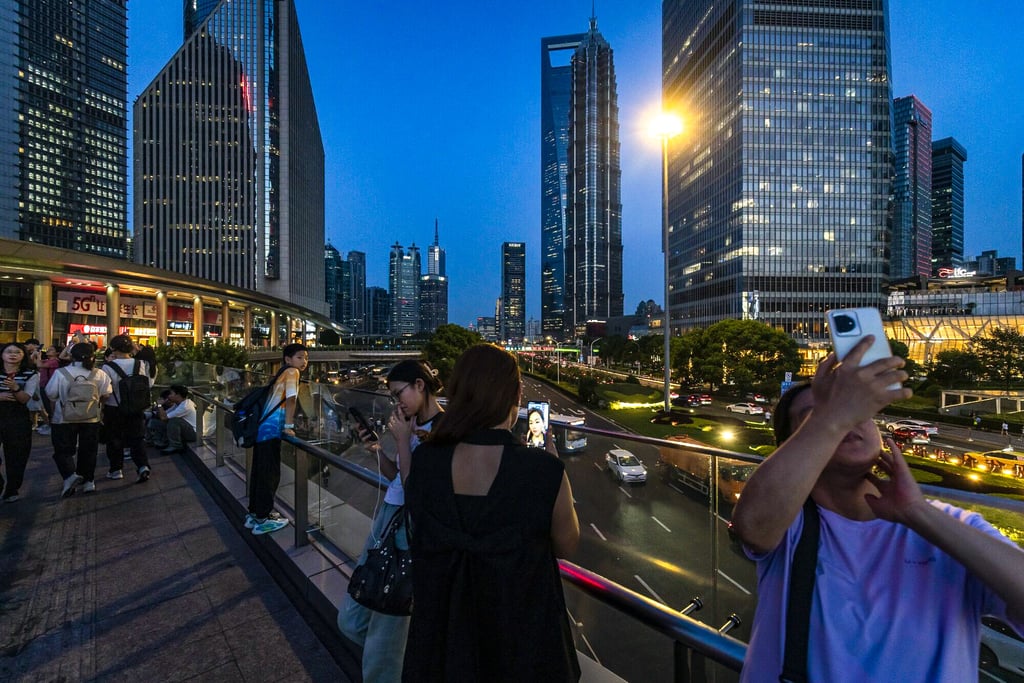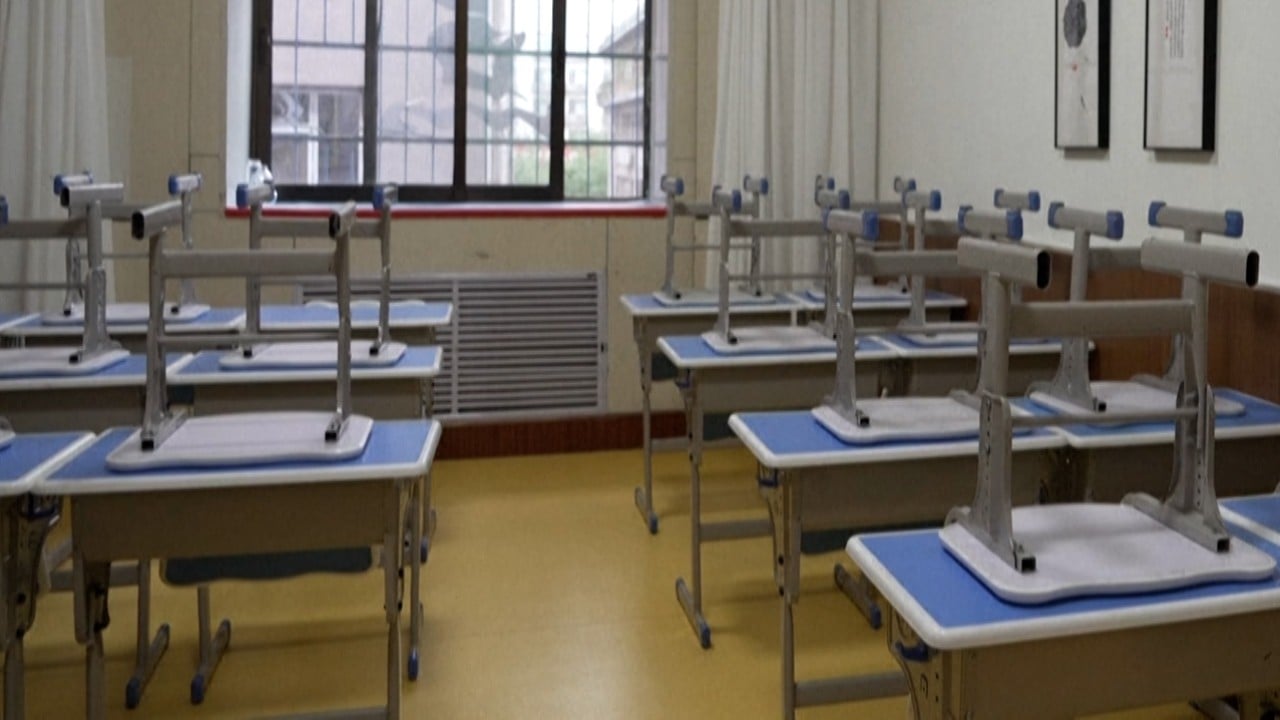Zheng Yajun, a mainland-born PhD graduate of the University of Hong Kong, knows from personal experience how difficult it is to break through China’s urban-rural divide.
Raised and educated in a remote small town in the northwestern province of Gansu, Zheng sat for the national college entrance examination twice before she was admitted to Shanghai’s prestigious Fudan University in 2009.
Zheng did not find life easy at Fudan, where she struggled to understand her instructors and fellow classmates from big cities. Many of her classmates from less developed regions had a similar experience, she said.

“In my first year of university, I couldn’t understand why – although I had worked hard since childhood and never wasted a day – I still looked so bad compared to other students [from big cities],” she said in a widely circulated interview last year.
She managed to survive the fierce competition. After her graduation from Fudan, she expanded her master’s thesis on the gap between urban and rural students at top universities in China, and her findings were published early last year.
Zheng’s book, which discusses class differences from a sociological perspective, is one of the most prominent of several works on similar topics published in recent years in China, sparking widespread media coverage and public debate.
These discussions all point to the same question: are class divisions and the rural-urban divide irreparable in today’s China?
The Communist Party leadership is aware that if the urban-rural divide continues to widen, China’s sustainable growth could be jeopardised.
At a key plenary session in 2013, party leaders pointed out that “the dual structure of urban and rural areas is the main obstacle to the integration of urban and rural development”.
Six years later, at another plenum, party leadership proposed to “continue to promote the integrated development of compulsory education in urban and rural areas”.
The problem was again discussed among top leaders of the Communist Party last month, when they called for actions to narrow the gap during the third plenary session of the decision-making Central Committee.
Observers said while Beijing was aware of its gravity, resolving the problem was no easy task, especially in education.
In China, all children are required to complete nine years of compulsory education, including primary and junior high school.
But scholars have pointed out that the deficiencies in China’s rural education start when students are very young, and if the rural-urban divide persists, the world’s second-biggest economy, which is already slumping, will face a serious human capital crisis.
Scott Rozelle, faculty co-director of the Stanford Centre on China’s Economy and Institutions, said that low- and middle-income labour in rural areas “could be a major long-term obstacle to China’s sustainable economic growth”.
This is because a lack of skills has made it difficult for rural workers to compete in the urban labour market.
“Children attending rural schools have difficulty acquiring the academic skills needed for highly skilled jobs,” Rozelle said.
According to research by Rozelle, 40 to 50 per cent of rural children have delays in cognitive development, which can lead to difficulties in learning maths, science and languages.
“The average level of education of the entire workforce in China (aged 18 to 65) is slightly lower by international standards, almost entirely due to the lower level of education of the rural population. A significant proportion of rural workers do not have a high school diploma,” Rozelle said.
He added that if Chinese workers find it difficult to move from low-skilled to high-skilled jobs, “it could hinder China’s transition to a high-income, high-skilled economy”.
Beijing announced in 2021 that it had achieved success in eliminating extreme poverty, and President Xi Jinping hailed the lifting of 850 million people out of poverty as an “unprecedented achievement” unmatched by any country in modern history.
But Rozelle said China’s “policy focus needs to shift to addressing the challenges faced by hundreds of millions of low-income rural Chinese”.
According to the 2021 national census, the population living in rural areas stood at 509.79 million, accounting for 36.11 per cent of China’s total population.
Following the conclusion of the third plenum last month, party leaders announced an action plan for the next five years to support rural development in agriculture, housing and for migrant workers.
The plenum’s decisions hinted that some policies seen as contributing to the rural-urban divide might ease, including the much-criticised household registration system, or hukou, which restricts the movement of people from rural to urban areas where a residency often means better social welfare, medical care and education for children.
Zheng Linyi, a researcher with the China Academy for Rural Development at Zhejiang University, said some measures included in the action plan would create conditions for residents to move more freely between rural and urban areas and promote the “integrated development” of cities and the countryside.
He said the income gap between urban and rural areas in China had narrowed in the past decade, but it would be more difficult to achieve the reform goal “if there are still huge gaps in public services and infrastructure because of the imbalance of urban and rural development”.
Zheng said the education gap was a key manifestation of the urban-rural divide.
He added that if China’s population declines in the coming decades, as most demographers have predicted, mergers of some rural schools would become inevitable, and this means more rural students would have to travel longer distances for school, creating “an increased burden on farmers”.
Yuan Changgeng, an anthropologist at Yunnan University, warned that public awareness was still lacking in the discussion of the rural-urban divide.
Public discussions in recent years about the disadvantages of rural students have been dominated by “middle-class and intellectual circles”, Yuan said.
“This kind of social discussion is still small-scale,” Yuan said, adding that people from small towns or rural areas do not have enough of a voice.
Settling in the city, becoming a member of the middle class and enjoying a better life are long-held aspirations of many people from less-developed regions, especially rural areas. These aspirations have been strongly supported by nearly four decades of rapid economic growth in China.
For many decades, and especially after the reform and opening process kicked off by Deng Xiaoping, Chinese society has encouraged individual endeavours, and many people believe that hard work can lead to social mobility. The highly competitive university entrance exam system, known as the gaokao, is at the heart of this belief.
But HKU’s Zheng said things have changed. For many students from less developed regions, especially rural areas, it has become increasingly difficult to enter the middle class despite individual efforts.
She interviewed 62 students from Beijing’s Tsinghua University and Shanghai’s Fudan University and found that the differences in their life choices at university and after graduation were greatly affected by their background.
Students from big cities have a better understanding of how to survive at elite universities and are able to plan their careers in advance, and it is easier for them to find an “elite” job after graduation. Students from rural areas, however, are at a disadvantage in this game.
The elite university students interviewed by Zheng are already at the top of the rural student pyramid, while the situation seems even more acute for the vast number of students at the bottom, who are largely invisible.
According to her research, rural graduates from top universities still achieved social mobility compared to their parents, but they fell behind their urban counterparts after graduation.
Yuan, who has long studied social issues in China, said the belief that success in the gaokao could lead to social mobility might have been shaken.
Yuan grew up in a county in the eastern province of Shandong. He said that when he was in high school more than 20 years ago, most of his classmates were hard-working rural students and “their efforts were rewarded compared to the living conditions of their parents’ generation”.
But Yuan said that now some of his students are convinced they will have limited achievements, reflecting social attitudes that are different from those of their parents who came of age in the 1980s, after the gaokao had been restored following the end of the Cultural Revolution and at a time when people were generally optimistic about the future.
According to Yuan, another problem was that many people “refused to question the fairness of the gaokao”.
“As long as you have a basic understanding of China’s education system, you know that it is not the final examination that determines the results, but the years of preparations,” he said, adding that the huge rural-urban divide had made these preparations “not a fair game”.
Big Data China, a collaboration between the Washington-based think tank Centre for Strategic and International Studies and Stanford University, published an analysis last month showing how Chinese people’s beliefs about personal effort and inequality had changed based on surveys conducted over the past 20 years.
Drawing on work by Rozelle and Martin Whyte, a professor emeritus of sociology at Harvard, the report found that between 2004 and 2014, respondents believed that “lack of ability, “low education” and “lack of effort” were the three most important factors explaining poverty in China.
But by 2023, “unequal opportunity” had become the top reason respondents cited for why people were poor, while “an unfair economic system” ranked third, with only “low education” remaining in the top three.
Similarly, when asked why people became rich in China, the top three factors chosen in 2009 were “ability and talent”, “hard work” and “good education”. But as of last year, the top three factors were “having good connections”, “grew up in a rich family” and “better opportunities”.
In addition, the share of people who agreed with the statement “in our country, effort is always rewarded” fell from 62 to 28 per cent over the past two decades.
The researchers said while these changes were “shaped by the excessively strict policies implemented to control the spread of the Covid-19 virus over the course of 2022”, they actually echoed sentiments that had already been trending in Chinese society in previous years.
The idea of “lying flat” or tangping – doing the bare minimum to get through hard times, and doing nothing except what is absolutely necessary to survive – has become popular among young people.
This means that some people have become reluctant to study hard, join the brutal competition for jobs, buy a house or start a family.
In 2021, the official censors removed much of the online discussion around lying flat after realising that the idea, if it became widespread, could affect economic development.
The Big Data China authors said the trends “point to an overall challenge for the Chinese government in the coming years, as it works to rebuild confidence in the economy’s ability to provide opportunities for all and develop a revised social contract acceptable to the populace”.
They added that if the government introduced “the right kind of policies” to promote economic growth, “it could generate a reduction in perceptions of inequity and unfairness and greater popular optimism about the future”.




